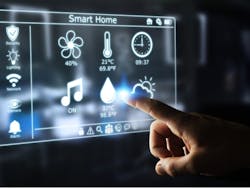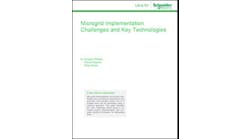Demand response is reaching a saturation point, but load flexibility is emerging as its new iteration, a 2.0 that is much more powerful and could become a 200 GW grid resource for the U.S. by 2030.
That’s the word from the Brattle Group, in a report, “The National Potential for Load Flexibility: Value and Market Potential through 2030.”
Among distributed energy resources, solar and storage tend to get the attention. But it turns out demand response — a service often provided by microgrids — represents the largest distributed energy resource in the US. However, conventional demand response is facing a slowdown due to several factors, among them wholesale market rules, low capacity and hourly energy pricing and excess utility peaking resources, according to the report.
Courtesy of the Brattle Group
But now enter load flexibility, a form of demand response that controls electricity usage in real time, sometimes using common household appliances like smart thermostats and water heaters. Its importance rises as the grid faces issues balancing supply and demand with the use of more wind and solar energy, generators that can go on and off with the weather. Load flexibility can help by quickly lowering demand to balance the grid.
In fact, load flexiblity offers huge potential; it could serve 20% of estimated peak load in the US in 2030, according to the report. That’s more than three times the capability of existing demand response programs and is worth more than $15 billion a year in avoided system costs — money not spent on building new energy infrastructure or purchasing power on the market.
Load flexibility can add to what demand response already provides, yielding higher value at a lower cost. It provides frequency regulation, distribution-level capacity and other grid services. Able to aid the grid in a geographically targeted way, it lowers demand to avert the need to build new infrastructure. Load flexibility also offers an additional resource as electric vehicles increase demand on the grid. And because power plants need not operate as much when load flexibility is in play, it also helps cut the use of fossil fuels, so is a powerful way to decarbonize, according to the report.
Technologies used for load flexibility
One of the first ways to take advantage of load flexibility’s power is to expand demand response’s value streams by, for example, using direct load control for transmission and distribution capacity deferral and demand bidding for load shifting.
To reap larger value streams, utilities and regulators could focus on dynamic pricing, behavioral demand response, electric vehicle (EV) managed charging, smart water heating, timed water heating, smart thermostats and ice-based thermal storage.
Residential smart thermostat programs and dynamic pricing appear to offer the most potential as cost-effective resources within current markets. These programs could increase existing demand response capability by 40 GW, or by 67% the study said.
Electric water heating could also provide significant amounts of load flexibility, said the report. Controlling electric resistance water heating could provide grid services, with characteristics similar to batteries.
“While water heaters have been used to reduce peak capacity for decades, recent technological developments now allow for more flexibility in load control, including the provision of frequency regulation in the past few years,” said the report.
Grid-connected water heating programs have been created in Arizona, California, Hawaii, Minnesota, Oregon, Vermont and in the PJM territory because they are capable of providing integration of renewable energy.
“The thermal energy storage properties of the water tank work similar to a battery,” said the report. Like batteries, the water tanks can be used to store renewable energy and provide grid services.
Largest sources of value
Load flexibility saves the most money where it reduces need for generation. In 2030, that amounts to $9.4 billion a year, which is 57% of the total value of load flexibility, said the report.
Value also can be derived from avoiding costs for energy, transmission and distribution, and ancilliary services. Specifically, in 2030 load flexibility would help avoid an estimated $4.8 billion a year in energy costs, representing 29% of load flexibility’s total value; $1.9 billion annually for transmission and distribution, representing 12%; and $0.3 billion a year for ancillary services, or 2%.
The report noted that these values are national averages. The potential varies from region to region.
For example, Minnesota’s need for load flexibility is driven primarily by the retirement of 1,400 MW of coal generation. The state needs generation capacity.
For California, on the other hand, the primary driver is the need for renewable energy integration and solving local capacity constraints. Energy load shifting and ancillary services provide the largest amounts of potential value.
Advancing load flexibility
Achieving significant load reductions will require load flexibility programs to be dispatched more often and during a broader timeframe during the day. That will require new customer engagement measures and advanced strategies for dispatching load flexibility programs.
From a regulatory standpoint, dynamic retail rates — sub-hourly retail pricing — plus participation incentives will be needed.
“Both methods can be used to achieve the potential identified in this study. Utilities and regulators must determine their preferred position on the spectrum of options,” said the report.
Overall, the potential for decarbonizing and reducing costs with load flexibility is dramatic and much overlooked. Unleashing that potential will be the job of regulators, utilities and customers.
“Improved assessment of load flexibility opportunities can reduce system costs, facilitate grid modernization, and provide environmental benefits,” concluded the report.
Track news about distributed energy resources. Subscribe to the free Microgrid Knowledge newsletter.








